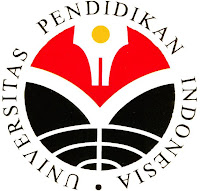Indonesian Space Sciences & Technology School
BASICS OF SPACE FLIGHT


Added & Edited
By: Arip Nurahman
Department of Physics Education, Faculty of Sciences and Mathematics
By: Arip Nurahman
Department of Physics Education, Faculty of Sciences and Mathematics
Indonesia University of Education
and
Follower Open Course Ware at Massachusetts Institute of Technology
Cambridge, USA
Department of Physics
http://web.mit.edu/physics/
http://ocw.mit.edu/OcwWeb/Physics/index.htm
&
Aeronautics and Astronautics Engineering
http://web.mit.edu/aeroastro/www/
http://ocw.mit.edu/OcwWeb/Aeronautics-and-Astronautics/index.htm
Follower Open Course Ware at Massachusetts Institute of Technology
Cambridge, USA
Department of Physics
http://web.mit.edu/physics/
http://ocw.mit.edu/OcwWeb/Physics/index.htm
&
Aeronautics and Astronautics Engineering
http://web.mit.edu/aeroastro/www/
http://ocw.mit.edu/OcwWeb/Aeronautics-and-Astronautics/index.htm


In this page we classify and describe the types of chemical propellants typically used in rocketry. Included are tables listing the properties of the most frequently used fuels and oxidizers.
- Liquid Propellants
- Solid Propellants
- Hybrid Propellants
- Tables of Properties
In this page we describe how a rocket works by introducing and explaining the physics of rocket propulsion. We will explain how a rocket engine accelerates the hot gases generated by the combustion of propellant to produce thrust. Engine types and thrust chamber design equations are presented. As we introduce the necessary formulae, example problems are provided to demonstrate their use.
- Thrust
- Conservation of Momentum
- Impulse & Momentum
- Combustion & Exhaust Velocity
- Specific Impulse
- Rocket Engines
- Power Cycles
- Engine Cooling
- Solid Rocket Motors
- Monopropellant Engines
- Staging
In this page we define an orbit and describe the various types. We will then introduce Newton's laws of motion and Universal Gravitation and explain how they apply to the motions of planets and satellites. We will examine how the Earth, Moon, Sun, and atmosphere affects a satellite's orbit. We then conclude with a discussion of some common orbital maneuvers and maintenance. Along the way we will introduce many basic formulae and provide example problems illustrating their application.
- Conic Sections
- Orbital Elements
- Types of Orbits
- Newton's Laws of Motion and Universal Gravitation
- Uniform Circular Motion
- Motions of Planets and Satellites
- Launch of a Space Vehicle
- Position in an Elliptical Orbit
- Orbit Perturbations
- Orbit Maneuvers
- Escape Velocity
The following are the appendices referenced in Parts I, II and III above.
- Example Problems
- Basic Constants
- Atmosphere Properties
- Drag Coefficients
- Propellant Combustion Charts
- Supplement #1: Optimizing Expansion for Maximum Thrust
- Units of Weights and Measures
Braeuning
























No comments:
Post a Comment